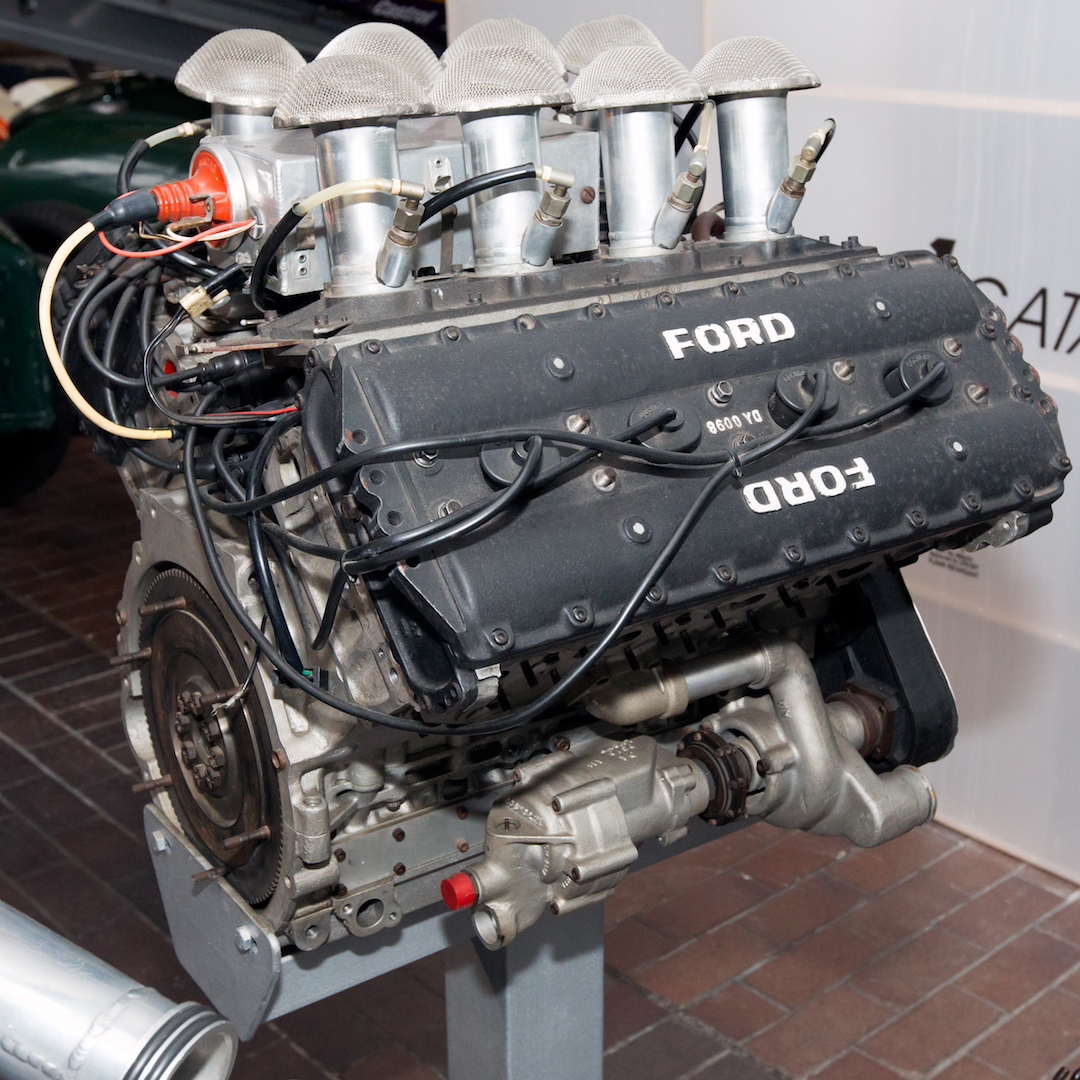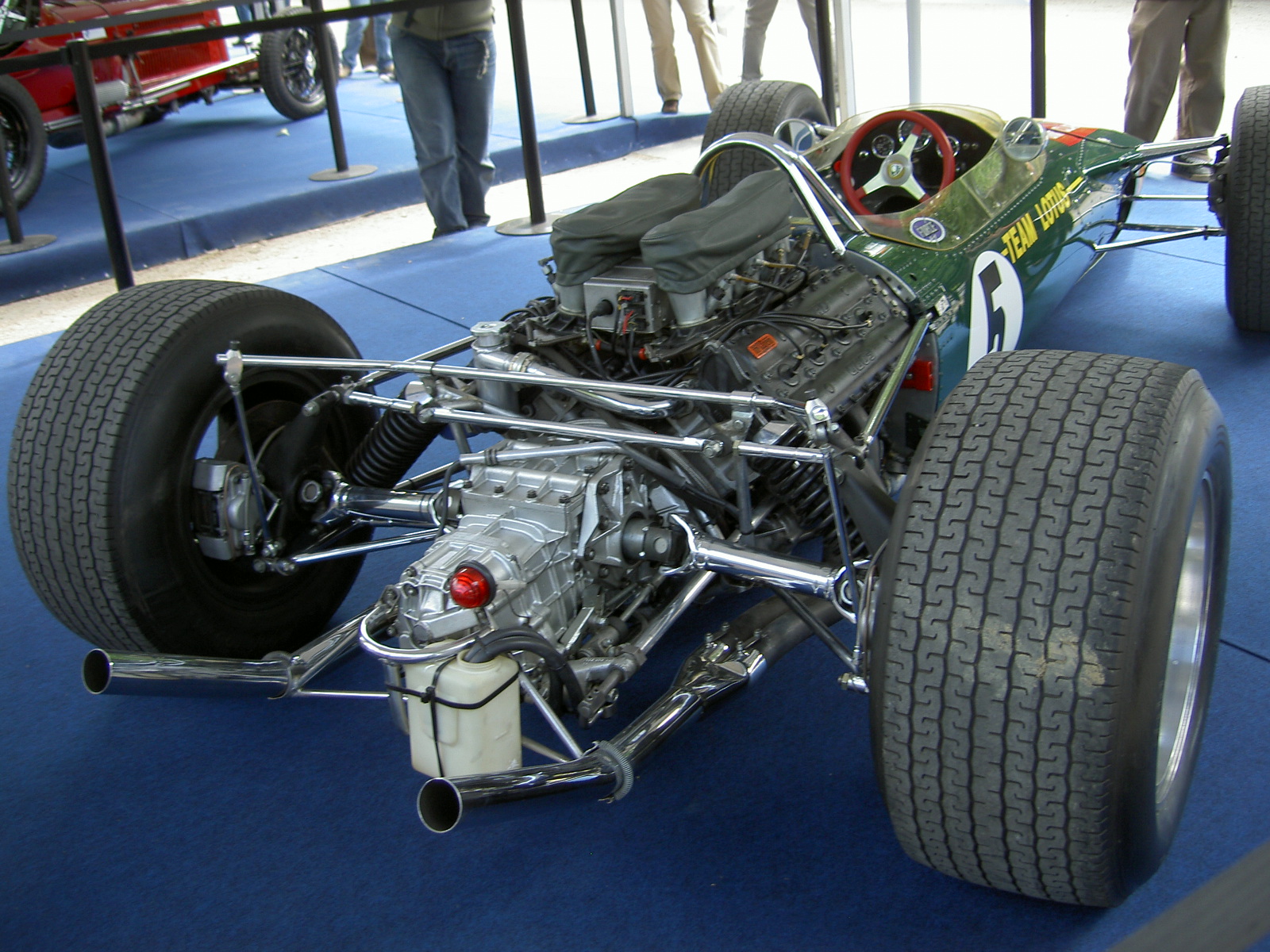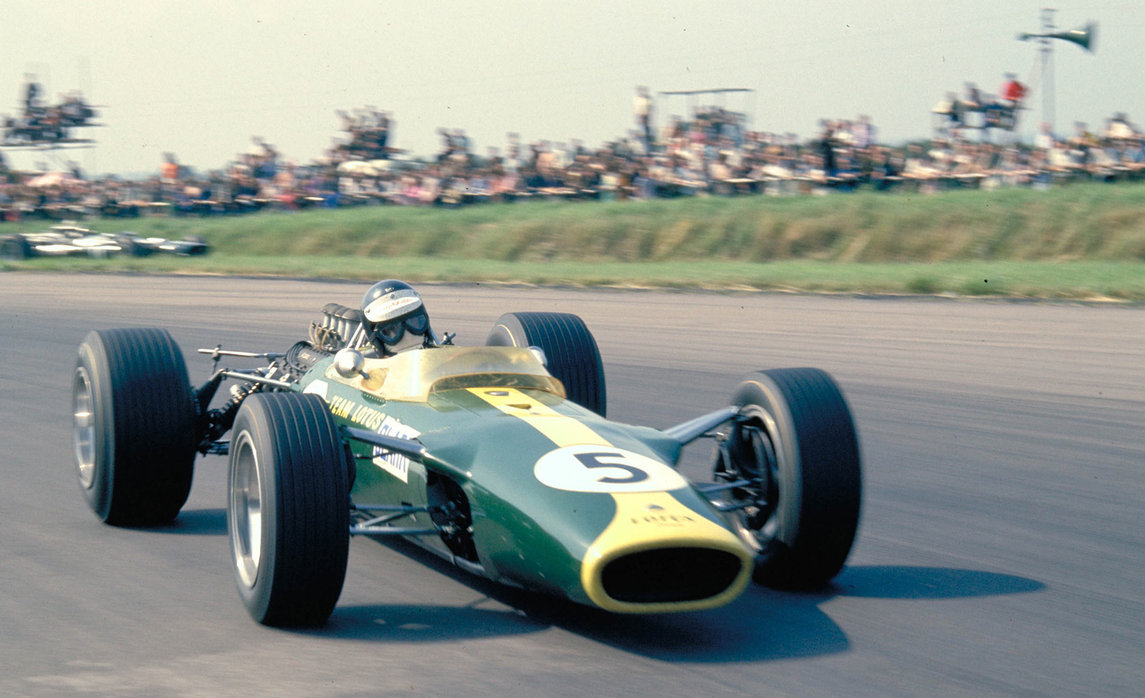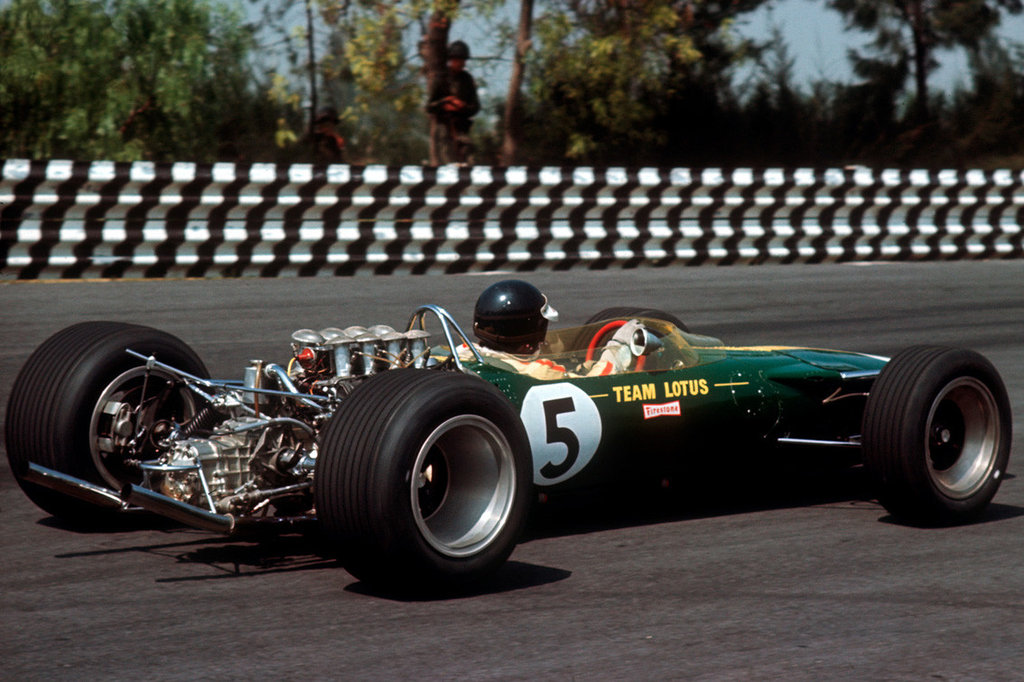"Image via Lotus The legendary Ford Cosworth DFV (Double Four Valve) V8 engine is, by a mile, the most successful F1 racing engine of all time. Cosworth was founded in 1958 by Mike Costin and Keith Duckworth to build racing engines. "

Cosworth DFV
The best engine ever?
“Well, the thing that’s impressive apart from anything else in an engine is that each individual cylinder manages to go ‘suck, squeeze, bang, blow’ 92 times per second. The sparks required at 11,000rpm are 733 per second. The piston weighs five and a quarter tons at 11,000rpm…” explains the Cosworth DFV’s Chief Engineer Keith Duckworth to BBC Horizon in 1981.
He’s giving us an idea as to the forces involved in his engine, an engine that changed Formula 1. He continues. “…every firing stroke – of which there’s 92 per cylinder, per second – is a force of about 7 tons on the piston, so the whole of the forces involved in an engine are colossal.”

What Duckworth is describing is one of the greatest engines in Formula 1 history and his 1966 creation – the Cosworth DFV. ‘DFV’ standing for ‘Double Four Valve’ because of the presence of four valves per cylinder and ‘Double’ due to the fact that it was the 8-cylinder evolution of an earlier, 4-cylinder, 1.6-litre unit. The DFV was a 3-litre, 400 horsepower unit that first appeared at the Dutch Grand Prix in 1967 surrounded by some of the greatest names in the F1 history books.
At Zandvoort, the engine was to be driven by Graham Hill and Jim Clark, quite possibly the finest pair of drivers ever to grace a single team, that team being Lotus, double world champions headed up by the genius Colin Chapman who, to improve overall rigidity, had made the engine an integral part of the car by mounting the suspension directly to the engine. He also happened to be the man who triggered the invention of the DFV. It was Chapman who convinced Ford to splash out £100,000 of funding on Cosworth to design and manufacturer this new engine. If you had to design a team for your new engine, this combination of people with a new Lotus chassis is about as optimal as it gets, except it wasn’t.

Unlike modern F1 cars, testing had been extremely limited. The first time Jim Clark saw the new Cosworth-powered Lotus was as it rolled off the back of a transporter truck near the paddock. Practice sessions that followed left the Scot feeling rather unhappy with the car, come qualifying, he’d have to settle for 4th place, though his team mate, the suave Hill would start the race from Pole Position. Both drivers were said to have struggled with sudden power surges emerging from the DFV – particularly above 6,500rpm – but the signs were promising, Hill had beaten the lap record by 6.2-seconds.

Come the end of the race though, it was Jim Clark who was celebrating another win. Hill had begun the race in style but a broken timing gear ended his race. Clark grew with confidence throughout the 90 laps and the DFV had won its first race, at its first attempt, in a new car driven by a man who’d not even seen it until a couple of days ago. It was just the beginning.
The DFV in its various forms went on to conquer the World. 155 F1 victories over 18 seasons in F1 produced 12 Driver’s World Championships and 10 Constructor’s Championships. The DFV even powered two 24 Hour of Le Mans victories in 1975 and 1980, and the modified ‘DFX’ went stateside to collect 10 successive Indy 500 race wins, powering nine consecutive CART Champions.
By the later days of its run in F1, the DFV was producing over 500bhp at 11,200 rpm. Ultimately, it gave way to the turbocharged monsters of the 1980s, but none of them achieved success on the same scale. Few have, actually. Keith Duckworth’s description of the forces involved inside the DFV are astounding, but the real colossal force was at work on the circuit, ripping up the records.
‘Colossal’, as it turns out, is the perfect one-word description of this incredible engine.

CLICK TO ENLARGE








